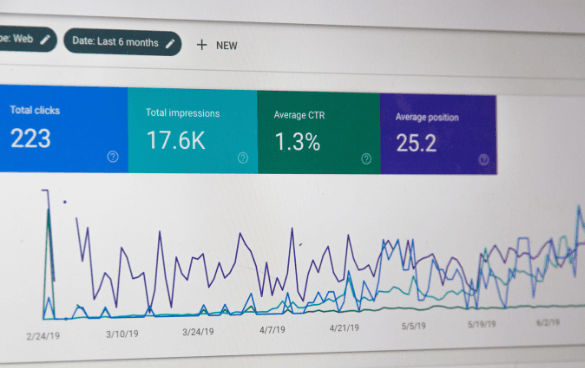Harnessing Remarketing in Google Analytics: A Comprehensive Guide
Harnessing remarketing in Google Analytics provides businesses a calculated side in reaching out to possible clients. This overview will certainly lose light on the necessary actions involved in using the full possibility of remarketing in Google Analytics, leading to boosted advertising outcomes.
Understanding Remarketing in Google Analytics
Remarketing in Google Analytics allows businesses to tactically target customers that have actually previously interacted with their site or mobile application. By leveraging information from Google Analytics, services can produce tailored remarketing lists based upon user habits, such as pages seen, actions taken, or details goals accomplished. This effective tool allows organizations to re-engage with users that have actually shown rate of interest in their solutions or items, inevitably enhancing the chance of conversion.
Recognizing the different sorts of remarketing techniques is vital for an effective campaign - What Is “Remarketing” In Google Analytics?. Google Analytics supplies various alternatives, including conventional remarketing, vibrant remarketing, and remarketing lists for search ads (RLSA) Each kind offers an one-of-a-kind purpose and can be tailored to fulfill details marketing objectives
Furthermore, examining the efficiency of remarketing campaigns is vital for enhancing outcomes. Google Analytics provides valuable understandings right into the performance of various remarketing techniques, enabling organizations to make data-driven choices and improve their targeting approach. By continuously monitoring and changing remarketing initiatives based on analytics data, businesses can take full advantage of ROI and drive success in their advertising efforts.
Establishing Up Remarketing Projects

After establishing target market lists, the next step is to connect Google Analytics with Google Ads. By connecting these two systems, businesses can flawlessly transfer audience checklists from Google Analytics to Google Ads for remarketing functions. This integration permits more exact targeting and much better campaign performance.
As soon as the accounts are linked, organizations can produce remarketing campaigns in Google Ads using the target market details formerly defined in Google Analytics. These projects can be customized with details ad creatives, messaging, and bidding process techniques to successfully re-engage with past site visitors and drive conversions. By following these actions, companies can utilize the power of remarketing to enhance their advertising and marketing efforts and increase ROI.
Making Use Of Audience Division Approaches

Predefined segments in Google Analytics enable you to swiftly assess common target market groups fresh individuals, returning customers, or customers that finished a specific goal on your site. Personalized sectors, on the various other hand, allow you to produce one-of-a-kind segments based upon certain criteria that are necessary to your company goals. Dynamic remarketing listings immediately change based upon customer actions, revealing tailored advertisements to users who have connected with your website particularly means.
Studying Remarketing Efficiency Metrics
Upon reviewing the efficiency of remarketing projects in Google Analytics, the analysis of key efficiency metrics provides valuable understandings into audience engagement and conversion prices. By diving right into metrics such as click-through prices (CTR), Visit This Link conversion rates, price per acquisition (CERTIFIED PUBLIC ACCOUNTANT), and return on ad spend (ROAS), marketers can determine the success of their remarketing initiatives. Evaluating these metrics allows marketing experts to optimize campaigns, fine-tune target market targeting, and assign spending plans effectively to improve overall remarketing performance.
Optimizing Remarketing Techniques
When refining remarketing techniques in Google Analytics, concentrating on target market segmentation is vital for achieving campaign success. By splitting your target market right into details segments based upon their habits, demographics, or interests, you can tailor your ads more successfully to every team. This targeted technique boosts the probability of engaging users who have already shown passion in your services or products, leading to higher conversion rates.
One more vital aspect of optimizing remarketing approaches is continuously testing and refining your projects (What Is “Remarketing” In Google Analytics?). A/B screening various ad creatives, messaging, or offers can assist you determine what resonates best with your audience and drives one of the most conversions. By examining the performance of these examinations in Google Analytics, you can make data-driven choices to maximize your remarketing initiatives additionally
Moreover, leveraging dynamic remarketing can dramatically improve your project results. This function allows you to show individualized ads to customers based on their previous interactions with your site, showcasing service or products they have previously checked out. By providing tailored content to users based on their actions and rate of interests, dynamic remarketing can aid boost engagement and drive conversions.
Final Thought
Finally, using remarketing in Google Analytics is a calculated technique to target customers that have formerly involved with a web site. By developing customized audience lists and making use of audience division techniques, businesses can optimize remarketing advocate enhanced conversion rates. Analyzing performance metrics and continuously enhancing strategies are vital for making best use of the performance of remarketing efforts.
Google Analytics offers numerous alternatives, consisting of typical remarketing, dynamic remarketing, and remarketing checklists for search ads see post (RLSA)After establishing up target market lists, the following step is to connect Google Analytics with Google Ads. By connecting these two platforms, organizations can perfectly move audience listings from Google Analytics to Google Ads for remarketing objectives.Once the accounts are linked, organizations can create remarketing campaigns in Google Advertisements using the audience details previously defined in Google Analytics.When refining remarketing approaches in Google Analytics, focusing on target market division is paramount for achieving project success.